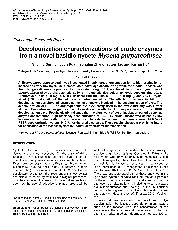摘要
A Mycena purpureofusca strain was investigated in submerged fermentation for its high production of laccase and very low mycelium biomass, as a novel dye-decolourizing white-rot fungus. Laccase was the only lignolytic enzyme produced by this strain during LSF. The extracellular crude enzyme from M. purpureofusca showed characteristic activity in synthetic dye colour removal, decolourizing 70.7% Bromothymol blue (500 mg/L), 58.8% Remazol Brilliant Blue R (RBBR 100 mg/L), and 22.2% Crystal violet (100 mg/L) without the addition of redox mediators. The effects of laccase inhibitor on decolourization corroborated laccase as the major enzyme involved in the decolourization of dyes. The decolourization of RBBR, an anthraquinonic dye extensively used in the textile industry was further studied. Box-Behnken design was used to evaluate the effects of three parameters on the RBBR decolourization yield. Results clearly indicated that the significant effect of incubation period as well as enzyme concentration. High efficiency decolourization of RBBR by crude laccase was gained by low laccase concentration without redox mediators. The selected optimal conditions allowed 97.03% of RBBR decolourization versus 94.21% for the predicted value. These results showed a promising future for application of the laccase system for industrial wastewater bioremediation.
- 出版日期2012-4-16
- 单位福建农林大学
